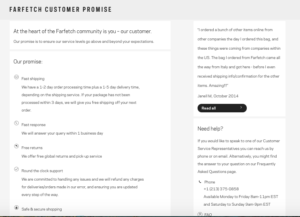Farfetch.com: an E-commerce platform valued at $1 billion that is helping boutiques “globalizing” local shopping

Though they will have to be wary of competitors in the market in the coming years, Farfetch seems to have found the recipe for success as a platform in the e-commerce fashion space.
Luxury fashion and retailing are struggling to cope with the digital innovation and transformation of the 21st century. Some high-end “luxury brands” still insist on maintaining a strictly brick-and-mortar experience, despite obvious changes in consumer shopping and purchasing behavior, or have limited experience with the digital consumer. Boutiques typically buy a specific selection of goods (directly from designers or merchants) to stock in their store for customers. The owner will buy based on a local or specific consumer, curated for their tastes. Despite possible demand, boutiques have a harder time servicing cglobal onsumers who can’t make it to their “brick-and-mortar” locations, due to logistics, or are less likely to buy directly from them online given their less professionalized digital presences or concerns about shipping or data safety.
Farfetch.com, currently valued at $1 billion, is an “e-commerce fashion platform” that connects “luxury brands and boutiques around the globe” with consumers. Essentially a two-sided marketplace, Farfetch creates value for boutiques who may be online but don’t have the scale, infrastructure, time, or expertise to service with global luxury consumers interested in their specific selection that cannot be found in other places, like major department stores or online retailers such as Net-A-Porter. Farfetch gives these merchants access to high quality infrastructure that they wouldn’t normally have at their scale, such as a mobile app (see below).
Further more, boutiques can amass a broader user base from being colocated with other boutiques and attract consumers who may not have found them at all. For customers, the value proposition is exactly the same; giving customers access to goods that they would not be able to find in other places either online or offline, with reliable shipping, credit card security, and data to create a superior experience.
By allowing these two entities to meet, Farfetch was able to transition from a typical e-commerce/retail service to a true platform. The business model of the platform is to connect brands and boutiques with customers and take a percentage of the transaction. Originally, unlike traditional retailers, both online and offline, Farfetch is not responsible for inventory but merely facilitates the transaction between the merchant and consumer. One example of the unique ways Farfetch is able to scale quickly is by having any boutique in the network to act as a de facto warehouse (where inventory typically resides) to increase scale across many different locations. Farfetch has managed to create a robust community of users and merchants, increasing value for all participants.
As a two-sided platform, Farfetch and the boutiques that use its services faces some questions about cooperation and competition. For example, if a boutique is seeing a huge increase in its sales, would it be tempted to develop their capacity (website, digital presence, and logistics) to sell directly to the consumer to bypass Farfetch’s commission and other fees? Or, switch to a new service promising lower fees? Unlike the competition in ridesharing apps, Farfetch seems to have more of a competitive advantage for several reasons. First, the cost of “multi-homing” for these merchants is much higher. Unlike the thousands of drivers who are mostly anonymous, Farfetch boutiques are much fewer in number and have a much more intimate and integrated relationship with the platform. Second, given the small scale of these boutiques, the benefits of developing capacity for all the needs of a global retailer simply don’t outweigh the costs they would incur to do so.





Good post!
What do you think will happen if Farfetch decides to scale by having its own warehouse?
Will they end up failing like Gilt?